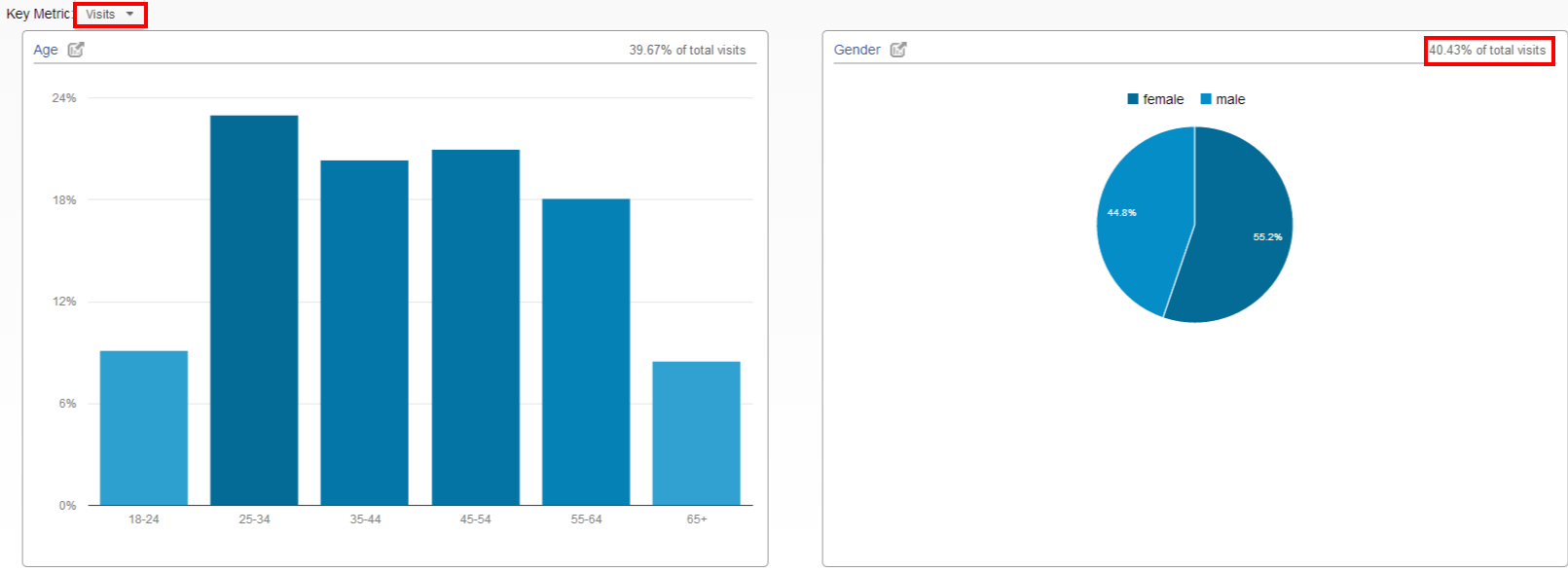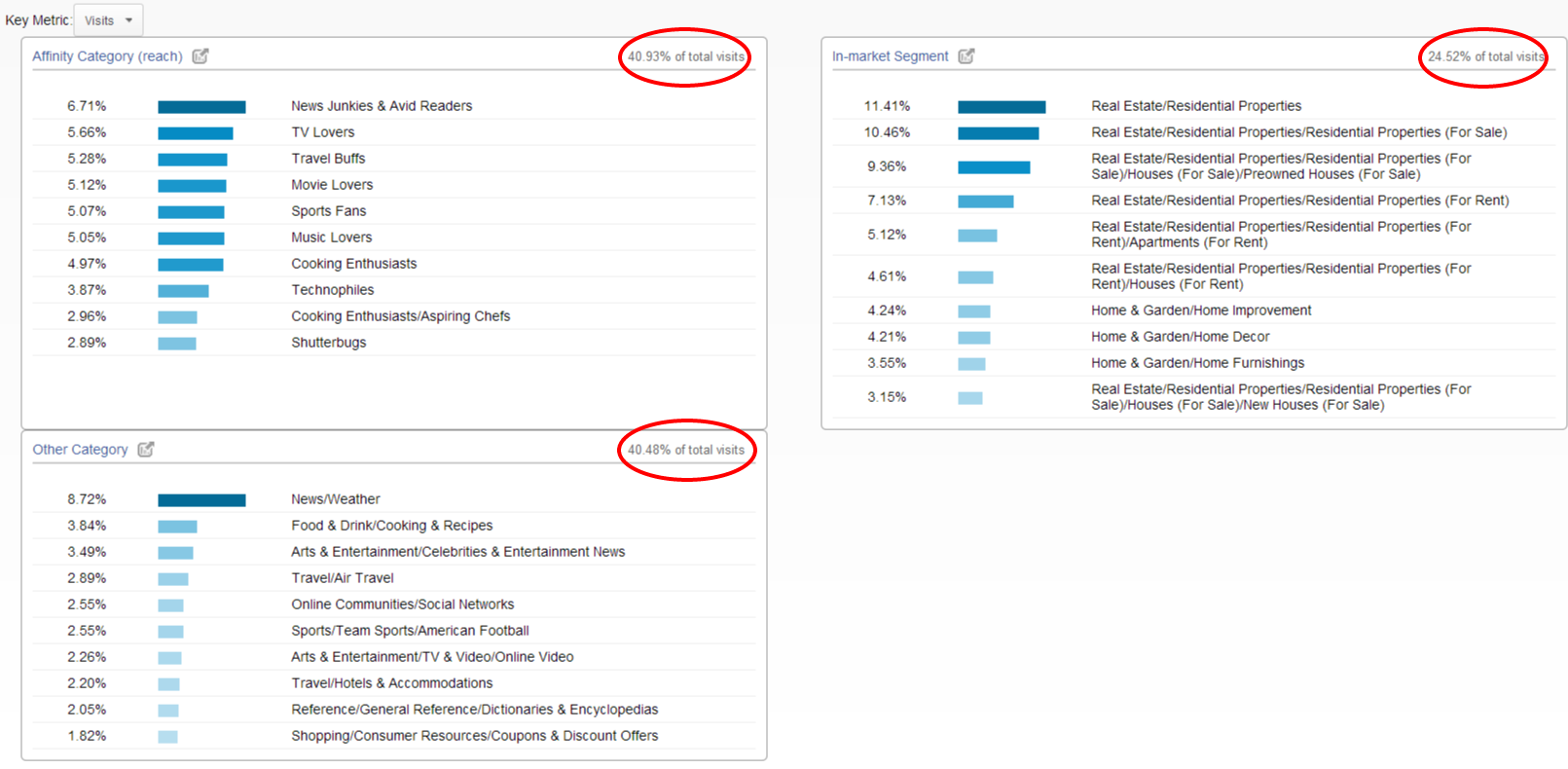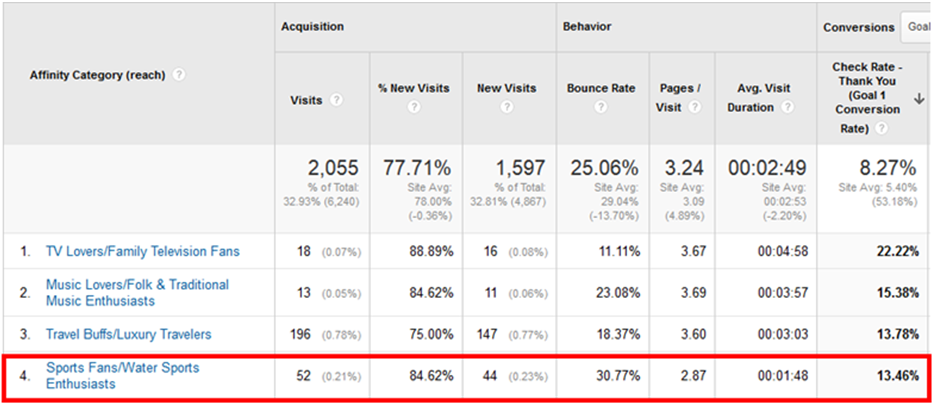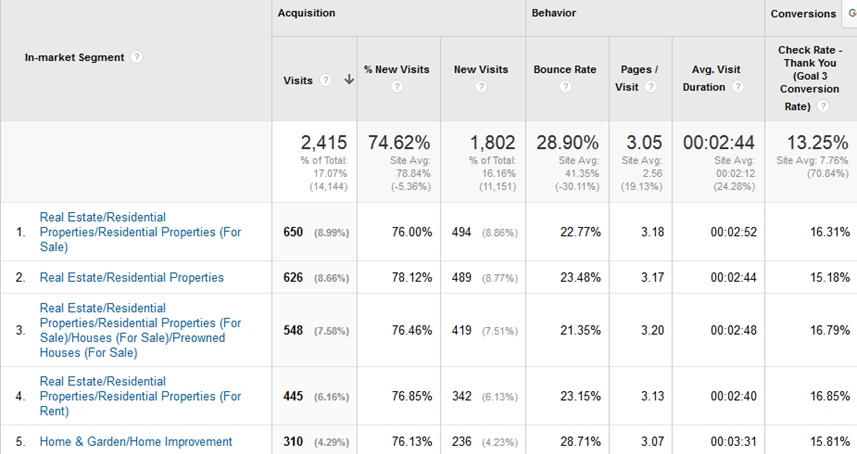As a hotelier, you may realize the importance of understanding your audience when creating effective marketing strategies, but do you know you how much easier it just became to really get to know your audience? Thanks to a new addition to Google Analytics, you can now snoop a little deeper into the behaviors and lifestyles of the people that visit your hotel’s website. Google Analytics recently added Demographics and Interests tabs to its reporting, providing hoteliers with a unique insight into the age, gender, and lifestyle traits of their websites’ visitors. This added knowledge allows hoteliers to create a better user experience on their hotels’ websites and refine their marketing strategies to target potential high-value guests.
Before getting the opportunity to dive into Google Analytics’ new data, you must enable the new reporting function. For detailed instructions, please visit Google Analytics Support. Once the reporting has been enabled, you will be able to see your website data broken out into two categories – Demographics and Interests. It’s also important to note that for both Interests and Demographics, the information is based on a percentage of your total site visitors and should be viewed as estimation. Therefore, the data in both of these tabs may not be a completely accurate representation of your site’s visitors, but it can definitely show you valuable trends.
How is this Information Obtained?
Information provided in the Demographics and Interests tabs in Google Analytics is derived from the implementation of the DoubleClick cookie. Cookies are small files, each with their unique identifier, that are saved in a visitor’s browser and allow servers to differentiate one browser from the next. The DoubleClick cookie uses this same premise to keep track of which ad has been shown to which browser and is therefore able to track conversions. For example, when a user views your website where you have enabled the DoubleClick cookie and then later uses the same browser to visit your site again and converts.
To protect the rights of minors, Google does not include data on visitors below the age of 18. If you are going to utilize the new Demographics and Interest tabs in Analytics by enabling the DoubleClick cookie, it is best practice to update your site’s Privacy Policy to ensure visitors are aware of the new cookie that will be stored in their browser. If users are uncomfortable with the new cookie, they have the option to opt out of DoubleClick cookie ID.
What Does the Demographics Tab Show?
The Demographics tab segments Google Analytics data into three sub-sections: overview, age, and gender.
- Overview – The Overview displays a high-level glance at your visitors’ ages and genders based on the key metric that you select, such as visits, bounce rate, or average visit duration. In the image below, the Overview data shows the visitor age and gender breakdown based on 40.43% of total visits to the site.

- Age – The Age tab provides a much closer look at how each age group behaved on the site by using metrics such as bounce rate, pages/visit, and transactions or goal completions. Displayed in a table that can be sorted by each metric, this information can show you which age group visited your site the most and which had the highest conversion rate during a given time period. By looking at this data you are able to determine which groups convert well but don’t necessarily visit in sufficient numbers. For instance, in the below example we see that 25-34 year olds visit this site the most often, but convert at one of the lowest rates. On the other hand, 55-64 year olds convert at a much higher rate, but don’t visit in large numbers.

By noticing these trends, a hotel can uncover high-value guests that it may not have considered marketing to before and can tailor site content based on these potential visitors. Why do 55-64 year old guests select this hotel instead of its competitors? Do they like that this hotel offers free breakfast and valet parking? Do they love that the rooms are extremely spacious? That this hotel has a free airport shuttle and 24/7 concierge? As a hotelier, make it your mission to determine what elements are important to this target age group – even if that means asking some guests within this age range next time they check-out or reading through months of TripAdvisor reviews! Highlight these areas of the hotel on its website callout boxes and hotel special offers to continue to increase conversions within the 55-64 year old age group.
- Gender – Similar to the data that is displayed in the Age tab, the Gender tab shows the breakdown of users into male and female based on the same site usage and goal completion metrics mentioned above. This information can give you insight into how different genders interact with your site. For instance, based on the information below, we can gather that women tend to have a higher conversion rate for this particular hotel, suggesting that this hotel should be tailoring its marketing strategies to female guests. This hotel should consider what amenities women feel are most important when booking a hotel and devise a plan to highlight those pivotal items on the website. Do women book at the hotel because it has a top-rated spa next door? If so, the hotel should create a banner ad on its homepage to highlight the hotel’s close proximity to the spa or the spa’s discounted rate for hotel guests!

What Does the Interests Tab Show?
The Interests tabs provide insights into your visitors’ lifestyle interests such as food, travel, sports, and news. The Interest tab is segmented into four areas: Overview, Affinity Categories, In-Market Categories, and Other Categories.
- Overview – This section provides us with a sweeping view of the three interest categories based on a key metric, Visits in the image below. As noted above, the information is based on a percentage of your total site visitors and should be viewed as estimation.

- Affinity Categories – Affinity Categories are broad classifications of user lifestyles. These are people that are just starting their purchasing process. Hoteliers can use an analysis of Affinity Categories to reach potential new guests by understanding their interests. As you can see in the table below, Affinity Categories range from TV lovers to travel buffs and everything in between. This is an excellent opportunity to consider new hotel specials that match the interests of your site visitors. In the example below, visitors that are interested in sports convert at a lower rate than those that are interested in family television shows. In an effort to increase conversions of sports fans, the hotel might consider creating a package that includes tickets to a sporting event with a complimentary shuttle or a free appetizer with a bucket of beers in the bar.

- In-Market Categories – In this section you will find a breakdown of users who are in the market for a specific product and are more likely to convert. You will find a smaller amount of site visits categorized as In-Market compared to the two other segments. This is simply because it is harder for Google to pinpoint which users are in the market to make a purchase for that specific industry. However, over time Google Analytics will be adding to the list of In-Market Categories.
 The data provided by the In-Market segment can help target your PPC ads. By analyzing the data in the new Google Analytics tabs, you are not only able to determine which age groups and genders are most likely to convert, but this information will also help you when selecting the target audience for your ads. Similarly, you can easily refine your marketing lists by eliminating any ad spend that you are currently using on low-value customers and increasing spend on customers with a high conversion rate.
The data provided by the In-Market segment can help target your PPC ads. By analyzing the data in the new Google Analytics tabs, you are not only able to determine which age groups and genders are most likely to convert, but this information will also help you when selecting the target audience for your ads. Similarly, you can easily refine your marketing lists by eliminating any ad spend that you are currently using on low-value customers and increasing spend on customers with a high conversion rate.
By taking reports like In-Market segments into consideration before creating your next PPC ad, you can create specific ads to focus on each category, which should result in a higher conversion rate. Take the In-Market data above – if your hotel is located next to botanical gardens or a local greenhouse and you are trying to reach the group of visitors that are interested in home and garden, you should highlight that information in your ad by including your close proximity to the venue in the ad copy and link the ad to a landing page dedicated to the local attraction.
- Other Categories – Providing a more detailed view of your audience’s interests, Other Categories classifies users by the content they absorb and how often they do so. Users are going to be interested in learning more about the specific categories that they already engage with and therefore will be more likely to convert if the site’s content matches their interests. With the new information that the Interests tab provides you, you will be able to explore different opportunities within your website to create a better user-experience. You will be able to tailor your content based on your audience’s interests, demographics, and lifestyle traits. For example, in the screenshot below, we can see that people who are interested in Food & Drink/Cooking & Recipes are visiting the hotel’s site in large quantities and are viewing more pages per visit and spending more time on the site than visitors with other interests.
 This indicates that this segment of visitors are more likely to spend additional time on the site exploring content than the other segments, so if the hotel added content that would be of interest to food enthusiasts, they may be more inclined to make a reservation at the hotel, whether at the hotel restaurant or by booking a room night. After analyzing this information, this particular hotel decided to build more dining content by including a “Meet The Chef” page. Blue Magnet now updates the hotel’s website each month with one of the Chef’s favorite recipes to provide the visitors with relevant content that would be of interest to their food audience. Additionally, we update the page with seasonal menu items or chef specials to maintain fresh content and encourage visitors to return.
This indicates that this segment of visitors are more likely to spend additional time on the site exploring content than the other segments, so if the hotel added content that would be of interest to food enthusiasts, they may be more inclined to make a reservation at the hotel, whether at the hotel restaurant or by booking a room night. After analyzing this information, this particular hotel decided to build more dining content by including a “Meet The Chef” page. Blue Magnet now updates the hotel’s website each month with one of the Chef’s favorite recipes to provide the visitors with relevant content that would be of interest to their food audience. Additionally, we update the page with seasonal menu items or chef specials to maintain fresh content and encourage visitors to return.
Key Takeaways
Understanding the lifestyles and demographics of people who visit your site will allow you to discover new opportunities, tailor your hotel’s online marketing strategy and provide a better user experience during the guests’ planning and booking stages. Enabling the Demographics and Interests tabs in Google Analytics is beneficial for a hotel and can provide openings to expand content on your site, better target your ads, and add new amenities or packages that cater to high-value audiences.




